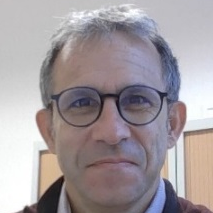New Trends in Advanced Manufacturing in the Aeronautical Sector
A special issue of Applied Sciences (ISSN 2076-3417). This special issue belongs to the section "Aerospace Science and Engineering".
Deadline for manuscript submissions: closed (31 May 2021) | Viewed by 3120
Special Issue Editors
Interests: design, computational modeling, and simulation; CAD, CAE, CAM, and BIM; geometric modeling and analysis; creativity and sustainability; innovative design; additive manufacturing; biomechanical engineering; engineering methods in human-related applications; biomedical engineering; big data and artificial intelligence; digital manufacturing for industry 4.0
Special Issues, Collections and Topics in MDPI journals
Interests: robust optimization applied to mechanical systems and components such as springs, spline couplings, cold-expanded bushings, holes, fasteners, non-linear energy sink; fiber Bragg grating sensors; ecodesign
Special Issue Information
Dear Colleagues,
The aeronautical industry is a strategic, high-value sector of the economy that adds and generates highly skilled jobs. In addition, aeronautical production has a knock-on effect on other manufacturing sectors, with the extension of their good practices. The convergence of safety requirements in the sector, together with the need to make them attractive to an increasingly demanding market, poses challenges that are difficult to find in other sectors. This is why aeronautical production is based on the deployment of advanced manufacturing technologies, which are the state of the art of contemporary technology.
Advanced manufacturing is traditionally understood as a set of technologies that apply the latest advances in different disciplines that converge in manufacturing—from materials and processes, robotics and automation, and digitization—to meet the main challenges facing the manufacturing industry, and, in particular, the aeronautical industry. Therefore, it is a necessity that the production of the aeronautical sector is opened up to research and technological innovation associated with the concepts of the connected industry 4.0.
We encourage contributions to this Special Issue that share knowledge, experience, and up-to-date scientific information in the areas that respond to current challenges in terms of digitization improvements, productivity, and competitiveness without forgetting the sustainability of new production processes. Topics should provide comprehensive coverage of experimental, computational, and analytical approaches that are generally used to reduce costs or manufacturing times and the entire development cycle, or the integration and connectivity of the entire supply chain, in particular, between design and manufacturing, assembly, and verification processes. The Special Issue also welcomes contributions that explore the modularity of designs leading to cost and time savings, without losing performance or reliability, or the need to move continuously towards manufacturing with zero defects and increasing finishing precision, or the introduction of advanced metrology systems embedded in production processes. This Special Issue will be useful for researchers in these areas and engineers engaged with advanced design and manufacturing problems.
This Special Issue will highlight original contributions related, but not limited to, the following topics:
- Industry 4.0 in advanced manufacturing (artificial vision, virtual and augmented reality, artificial intelligence, machine learning, big data, cybersecurity, digital twins, etc.)
- Advanced composite materials production processes
- Advanced metal alloy manufacturing processes
- Advanced multi-materials production processes
- Advanced inspection processes
- Implementation of robotization, automation, and digitization of production processes
- Sustainability and process recycling, moving towards a circular economy
Prof. Dr. Francisco Cavas Martínez
Prof. Dr. Manuel Paredes
Guest Editors
Manuscript Submission Information
Manuscripts should be submitted online at www.mdpi.com by registering and logging in to this website. Once you are registered, click here to go to the submission form. Manuscripts can be submitted until the deadline. All submissions that pass pre-check are peer-reviewed. Accepted papers will be published continuously in the journal (as soon as accepted) and will be listed together on the special issue website. Research articles, review articles as well as short communications are invited. For planned papers, a title and short abstract (about 100 words) can be sent to the Editorial Office for announcement on this website.
Submitted manuscripts should not have been published previously, nor be under consideration for publication elsewhere (except conference proceedings papers). All manuscripts are thoroughly refereed through a single-blind peer-review process. A guide for authors and other relevant information for submission of manuscripts is available on the Instructions for Authors page. Applied Sciences is an international peer-reviewed open access semimonthly journal published by MDPI.
Please visit the Instructions for Authors page before submitting a manuscript. The Article Processing Charge (APC) for publication in this open access journal is 2400 CHF (Swiss Francs). Submitted papers should be well formatted and use good English. Authors may use MDPI's English editing service prior to publication or during author revisions.
Keywords
- Industry 4.0 in advanced manufacturing (artificial vision, virtual and augmented reality, artificial intelligence, machine learning, big data, cybersecurity, digital twins, etc.)
- Advanced composite materials production processes
- Advanced metal alloy manufacturing processes
- Advanced multi-materials production processes
- Advanced inspection processes
- Implementation of robotization, automation, and digitization of production processes
- Sustainability and process recycling, moving towards a circular economy






